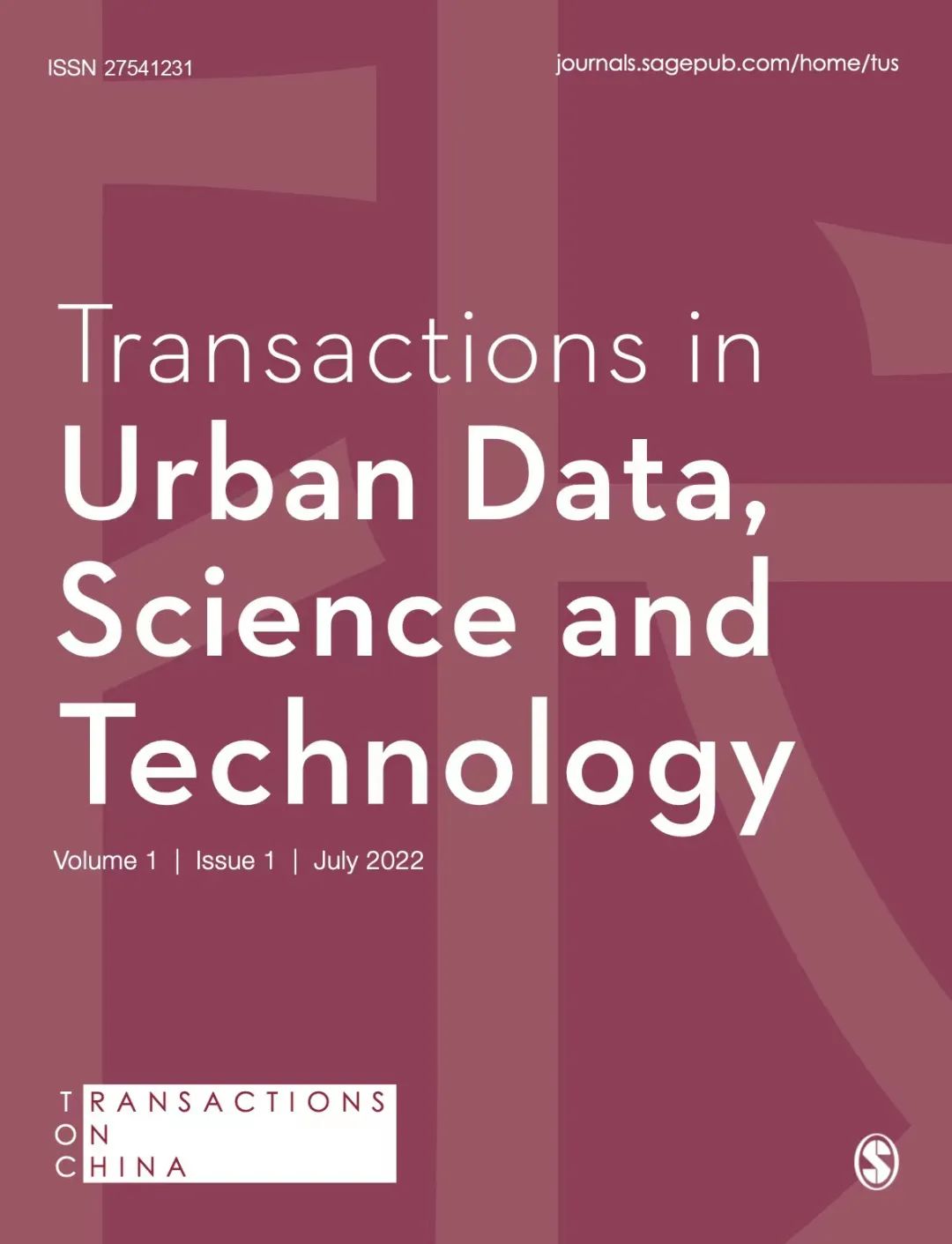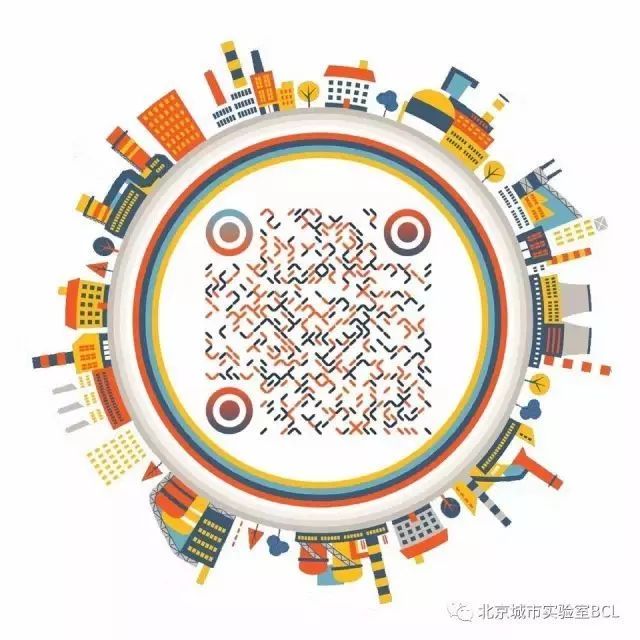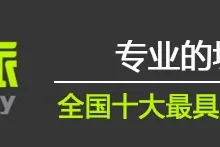期刊介绍
–INTRODUCTION–
近年来,融合计算机和通信技术的第四次工业革命正在通过人工智能、大数据和移动互联网等一系列颠覆性技术改变我们的城市。新的城市科学和新城市的科学正在出现和演化。
In recent years, the Fourth Industrial Revolution, which relies on the convergence of computers and communications, is now transforming our cities with a range of disruptive technologies such as artificial intelligence, big data, and the mobile Internet. Then the new science of cities and the science of new cities are emerging and co-evoluting.
一方面,正如迈克尔·巴蒂(Michael Batty)所说:技术产生了新的数据,为城市研究开发了新的方法和范式,有助于我们探索新的城市科学。然而,新的城市科学还处于发展起步阶段,我们对城市体系的运行规律和理想城市的打造方法仍然缺乏共识。近年来,大数据和人工智能技术在短时间内取得了巨大进步,扩大了城市研究的范围、尺度和内容,为我们带来了新的知识。云存储、5G移动互联网、物联网IoTs、数字孪生和智能建筑等其他新兴技术也让我们能够深入挖掘城市中的现象和问题。对研究人员来说,城市更像是实验室。
On the one hand, technologies generate new data, develop new methods and paradigms for urban research, facilitating us to explore the new science of cities, as Michael Batty puts it. However, the development of the new science of cities is in its infancy, and we still lack a consensus on the laws of urban system operation and what makes a good city. In recent years, big data or artificial intelligence technologies have achieved huge progress in a short period of time, expanding the scope, scale and content of urban research, and bringing us new knowledge. Other emerging technologies such as cloud storage, 5G mobile Internet, Internet of Things, digital twins, and intelligent construction also enable us to dig deeper into the phenomena and issues in cities. For researchers, cities are more like laboratories.
另一方面,技术进步影响了城市增长模式、人类行为和建筑技术,新技术的出现使得城市体系的运行出现了巨大的变化,新城市的科学迫切需要探索。网络购物、远程办公、智能家居、自动驾驶等新变化正逐渐渗透到公民的日常生活中,科技驱动的新城市也在不断演变。一座新城市的表现方式是一个需要追踪的动态问题。有趣的是,新城市与旧城市的城市体系可能存在不同的运行规律,因此经典城市理论是否适用、多大程度上适用于新城市,还有待观察。正是在这样一个动态的背景下,《Transactions in Urban Data, Science, and Technology》得以启动。
On the other hand, technological progress has affected the growth patterns, human behaviors and construction technologies, and the city itself has undergone dramatic changes. It is urgent to explore the science of new cities. Online shopping, telecommuting, Smart Homes, Autonomous Vehicles and other new changes are gradually permeating the daily lives of citizens, and new cities driven by technology are constantly evolving. The way in which a new city manifests itself is a dynamic issue to be tracked. Interestingly, new cities are likely to have different laws than the old ones, so it remains to be seen whether and to what extent the classic urban theory can be applied to new cities. It is in such a dynamic context that Transactions in Urban Data, Science, and Technology is being launched.
我们希望《Transactions in Urban Data, Science, and Technology》期刊为研究第四次工业革命背景下的中国城市贡献科学价值。目前,仍缺乏关于“新的城市科学”和“新城市的科学”的同行评议期刊,这与人们普遍关注新技术对城市科学的深刻影响的现实形成对比。《Transactions in Urban Data, Science, and Technology》旨在发表关于新技术及其对城市影响的前沿城市研究。它提供了一个灵活的跨学科平台,介绍中国城市和中国城市研究,供研究人员、城市规划师、决策者、工程师和不同学科的读者交流想法和信息。
We hope that the journal Transactions in Urban Data, Science, and Technology can quickly contribute scientific value to both the scholarship and practice concerning Chinese cities in the Fourth Industrial Revolution. Until now, there has been a lack of peer-reviewed journals on the new science of cities and the science of new cities, in contrast to the widespread concern in the profound and enormous impact of new technologies on urban science. Transactions in Urban Data, Science, and Technology seeks to publish cutting-edge urban research on new technologies and their impact on cities. It features a flexible and interdisciplinary platform to introduce Chinese cities and Chinese urban studies, for the exchange of ideas and information among researchers, urban planners, policymakers, engineers, and readers from different disciplines.
目标和范围
–AIMS AND SCOPE–
由移动互联网、大数据和人工智能等颠覆性技术驱动的第四次工业革命正在全球范围内改变着城市。中国的高度工业化和快速城市化为研究人员理解城市提出了新的问题,也为研究第四次工业革命提供了研究视角。而这些新涌现出的问题有不少都独立于已有的社会科学文献,这些问题的分析都需要严格的背景限定或比较视角。
A fourth Industrial Revolution – driven by disruptive technologies like the mobile Internet, as well as big data, and artificial intelligence – is now transforming cities globally. China’s hyper-industrialization and accelerating urbanization present researchers with new questions for understanding cities and a lens through which to understand this fourth Industrial Revolution. While many of these emerging questions are unique in the social-science literature, all require rigorous contextual and comparative analysis.
《Transactions in Urban Data, Science, and Technology》是一本跨学科、国际化、同行评议的期刊。它力求以中国为重点,发表关于“新的城市科学”和“新城市的科学”的创新性城市分析研究。该期刊是在地方,区域和比较语境下分析中国城市和研究中国城市化的刊物。
Transactions in Urban Data, Science, and Technology is an interdisciplinary, international, peer-reviewed journal. It seeks to publish innovative research in urban analytics on the new science of cities and the science of new cities with a focus on China. The journal is a space for the analysis of Chinese cities and the study of Chinese urbanization, in local, regional, and comparative context.

期刊关注但不限于以下主题:智慧城市/基础设施、颠覆性技术驱动的未来城市、城市建模、规划/设计支持系统、使用新兴技术的大数据和相关分析、人工智能、物联网、可穿戴设备及其在城市研究和城市规划中的应用研究。本期刊接受小到建筑尺度,大到全球尺度等各种尺度的研究。
It focuses on – but is not limited to – topics like: smart city/infrastructure, future cities driven by disruptive technologies, urban modelling, planning/design support systems, big data and related analytics using emerging technologies, artificial intelligence, the internet of things, wearable devices, and applications in urban studies and planning. Research from the building scale to the international scale is welcomed.
本期刊致力于主题、理论和方法的多样性,欢迎来自建成环境、计算机科学、人类学、环境研究、经济学、地理学、政治学和社会学等学科的广泛投稿。
Committed to topical, theoretical, and methodological diversity, the journal welcomes contributions from a wide range of disciplines including: computer science, anthropology, environmental studies, economics, geography, political science, and sociology.
编委会
–EDITORIAL BOARD–
| EDITOR-IN-CHIEF | |
| Ying Long | Tsinghua University, China |
| ASSOCIATE EDITORS | |
| Yao Shen | Tongji University, China |
| Jianghao Wang | Chinese Academy of Sciences, China |
| Fan Zhang | Massachusetts Institute of Technology, USA |
| Jiangping Zhou | The University of Hong Kong, Hong Kong |
| EDITORIAL BOARD | |
| Michael Batty | University College London, UK |
| Derudder Ben | KU Leuven, Belgium |
| Itzhak Benenson | Tel Aviv University, Israel |
| Kai Cao | East China Normal University, China |
| Yanwei Chai | Peking University, China |
| Min Chen | Nanjing Normal University, China |
| Clementine Cottineau | TU Delft, Netherlands |
| Anrong Dang | Tsinghua University, China |
| Chuan Ding | Beihang University, China |
| Zhixiang Fang | Wuhan University, China |
| Song Gao | University of Wisconsin – Madison, USA |
| Julia Gabriele Harten | The University of British Columbia,Canada |
| James Haworth | University College of London, UK |
| Bin Jiang | University of Gävle, Sweden |
| Shan Jiang | Tufts University, USA |
| Mei-Po Kwan | Chinese University of Hong Kong, Hong Kong |
| Liang Li | Max Planck Institute of Animal Behavior, Germany |
| Yan Liu | Queensland University, Australia |
| Yu Liu | Peking University, China |
| Zhenliang Ma | Monash University, Australia |
| Simone Mora | Massachusetts Institute of Technology, USA |
| Qiang Niu | Wuhan University, China |
| Jean-Claude Thill | The University of North Carolina at Charlotte, USA |
| De Wang | Tongji University, China |
| Mingshu Wang | University of Glasgow, UK |
| Wei Wang | Massachusetts Institute of Technology, USA |
| Saul Wilson | Harvard University, USA |
| Kang Wu | Capital University of Economics and Business, China |
| Wenjie Wu | Jinan University, China |
| Zhiqiang Wu | Tongji University, China |
| Junyan Yang | Southeastern University, USA |
| Tao Yang | China Academy of Urban Planning and Design, China |
| Jing Yao | University of Glasgow, UK |
| Anthony Gar-On Yeh | The University of Hong Kong, Hong Kong |
| Yang Yue | Shenzhen University, China |
| Bo Zhao | University of Washington, USA |
| Zhan Zhao | University of Washington, USA |
| Wenwen Zhang | Rutgers University, USA |
| Feng Zhen | Nanjing University, China |
| Chen Zhong | University College London, UK |
| Jian Zhuo | Tongji University, China |
投稿指南(部分)
–SUBMISSION GUIDELINES–
在本期刊中提交或发表不收取任何费用。
There are no fees payable to submit or publish in this Journal.
期刊接受多种类型的文章:
The Journal accept multiple types of articles:
研究论文:通过理论阐述或实证分析,对现有的知识理论有显著提升的研究。除标题(最多30个单词)、摘要(最多200个单词)和25-60个参考文献外,最多可包含8000个单词(仅限正文部分,不包括摘要、关键字、参考文献、表格和图表,但包括表格/图表的标题和图例)。我们鼓励将数据集的链接与文章一起提交。
Research article: Advances existing knowledge and debates significantly through theoretical elaboration or empirical analysis. May contain up to 8,000 words (text only, excluding abstract, keywords, references, tables and figures, but including table/figure titles and legends) in addition to a title (max. 30 words), an abstract (max. 200 words), and 25-60 references. Links to the datasets are encouraged to be submit together with the article.
综述论文:总结现有知识,确定关键见解和争论,并概述未来研究和/或实践的方向。除标题(最多30个单词)、摘要(最多200个单词)和不少于25个参考文献外,最多可包含10000个单词(仅限文本,不包括摘要、关键字、参考文献)。
Review article: Summarizes existing knowledge, identifies key insights and controversies, and outlines directions for future research and/or practice. May contain up to 10,000 words (text only, excluding abstract, keywords, references) in addition to a title (max. 30 words), an abstract (max. 200 words) and no less than 25 references.
观点论文:通过对现有的争论和话题提供全新的、打破思维定式的、前瞻性的视角,激发讨论。除标题(最多30个单词)和摘要(最多100个单词)外,最多可包含3000个单词(仅限文本,不包括摘要、关键字、参考文献)。参考文献的数量没有限制。观点论文由编辑委托撰写,但欢迎提出建议。
Perspective article: Stimulates discussion by providing a fresh, out-of-the-box, and forward-looking perspectives on existing debates and topics. May contain up to 3,000 words (text only, excluding abstract, keywords, references) in addition to a title (max. 30 words) and an abstract (max. 100 words). There is no limit on the number of references. Perspective articles are commissioned by the editors, but suggestions are welcome.
现场调查:由决策者或从业者撰写,以强调进一步生成知识的需要和/或分享实践中的经验教训。除标题(最多30个单词)和摘要(最多100个单词)外,最多可包含3000个单词(仅限文本,不包括摘要、关键字、参考文献)。参考文献的数量没有限制。
Note from the field: Written by a decision maker or practitioner in order to highlight needs for further knowledge generation and/or to share lessons learned from practice. May contain up to 3,000 words (text only, excluding abstract, keywords, references) in addition to a title (max. 30 words) and an abstract (max. 100 words). There is no limit on the number of references allowed.
评论:通过强调文章的相关性或指出文章的不足,对过去六个月以来在本期刊上发表的文章进行审视,以指出文章的相关性或不足之处。除标题(最多30个单词)外,最多可包含500个单词,参考文献不超过12篇。
Comment: Puts an article published in the journal in the previous six months into perspective, either by highlighting its relevance or pointing out its shortcomings. May contain up to 500 words in addition to a title (max. 30 words) and no more than 12 references.
数据描述:详细描述各种城市数据集,描述应包括收集数据的方法和充分的技术分析以保证论文的质量。除标题(最多30个单词)和摘要(最多200个单词)外,最多可包含6000个单词(仅限文本,不包括摘要、关键字、参考文献、表格和图表,但包括表格/图表标题和图例)。参考文献的数量没有限制。数据集的链接需要与文章一起提交。
Data descriptor: Describes all kinds of urban datasets in detail, the description should include the methods used to collect the data and sufficient technical analyses to support the quality. May contain up to 6,000 words (text only, excluding abstract, keywords, references, tables and figures, but including table/figure titles and legends) in addition to a title (max. 30 words) and an abstract (max. 200 words). There is no limit on the number of references allowed. Links to the datasets are required to be submit together with the article.
数据可视化:可视化和描述各种城市数据,描述应包括数据收集方法、可视化方法和发现。除标题(最多30个单词)和摘要(最多200个单词)外,最多可包含4000个单词(仅限文本,不包括摘要、关键字、参考文献、表格和图表,但包括表格/图表标题和图例),以及一个或两个高分辨率图像。参考文献的数量没有限制。可视化的链接需要与文章一起提交。
Data visualization: Visualizes and describes all kinds of urban data, the description should include the data collection methods, the visualization methods, and the discovery. May contain up to 4,000 words (text only, excluding abstract, keyword, references, tables and figures, but including table/figure titles and legends) with one or two high resolution images in addition to a title (max. 30 words) and an abstract (max. 200 words). There is no limit on the number of references allowed. Links to the visualizations are required to be submit together with the article.
实践案例:简要描述城市如何受到颠覆性技术的影响;对当前环境、问题或分歧的报道;以及对当前政策、规划或管理的回应的批判性讨论。除标题(最多30个单词)和摘要(最多100个单词)外,最多可包含3000个单词(仅限文本,不包括摘要、关键字、参考文献)。参考文献的数量没有限制。
Practical case: Covers a brief description of how a city is influenced by disruption technologies; an account of contemporary conditions, problems or issues; and a critical review of the current policy, planning or management responses. May contain up to 3,000 words (text only, excluding abstract, keywords, references) in addition to a title (max. 30 words) and an abstract (max. 100 words). There is no limit on the number of references allowed.
一般来说,无论提交哪种类型的论文,其参考文献的数量都没有限制
In general, there is no limit on the maximum number of references for each category of submission.
《投稿指南》目录:
1 What do we publish?
1.1 Aims & Scope
1.2 Article types
1.3 Writing your paper
2 Editorial policies
2.1 Peer review policy
2.2 Authorship
2.3 Acknowledgements
2.4 Funding
2.5 Declaration of conflicting interests
2.6 Research Data
3 Publishing policies
3.1 Publication ethics
3.2 Contributor’s publishing agreement
3.3 Open access and author archiving
4 Preparing your manuscript
4.1 Formatting
4.2 Artwork, figures and other graphics
4.3 Identifiable information
4.4 Supplemental material
4.5 Reference style
4.6 English language editing services
5 Submitting your manuscript
5.1 ORCID
5.2 Information required for completing your submission
5.3 Permissions
6 On acceptance and publication
6.1 SAGE Production
6.2 Online First publication
6.3 Access to your published article
6.4 Promoting your article
7 Further information
7.1 Appealing the publication decision
更多关于期刊投稿、文章和资讯等详细内容,欢迎关注期刊官方公众号【城市数据科学与技术汇刊TUS】,或点击文末【阅读原文】,复制【期刊主页链接】至浏览器搜索期刊官方网站。欢迎来自所有国家和背景的作者投稿!
【城市数据科学与技术汇刊TUS】期刊官方公众号:
微信点击上方公众号名片,
或搜索【城市数据科学与技术汇刊TUS】公众号关注
【期刊主页链接】:
https://us.sagepub.com/en-us/nam/transactions-in-urban-data-science-and-technology/journal203731

更多内容,请点击微信下方菜单即可查询。
请搜索微信号“Beijingcitylab”关注。

Email:BeijingCityLab@gmail.com
Emaillist: BCL@freelist.org
新浪微博:北京城市实验室BCL
微信号:beijingcitylab
网址: http://www.beijingcitylab.com
责任编辑:李文越、谭起云、孟庆祥
原文始发于微信公众号(北京城市实验室BCL):期刊推荐 | Transactions in Urban Data, Science, and Technology 欢迎投稿
 规划问道
规划问道







